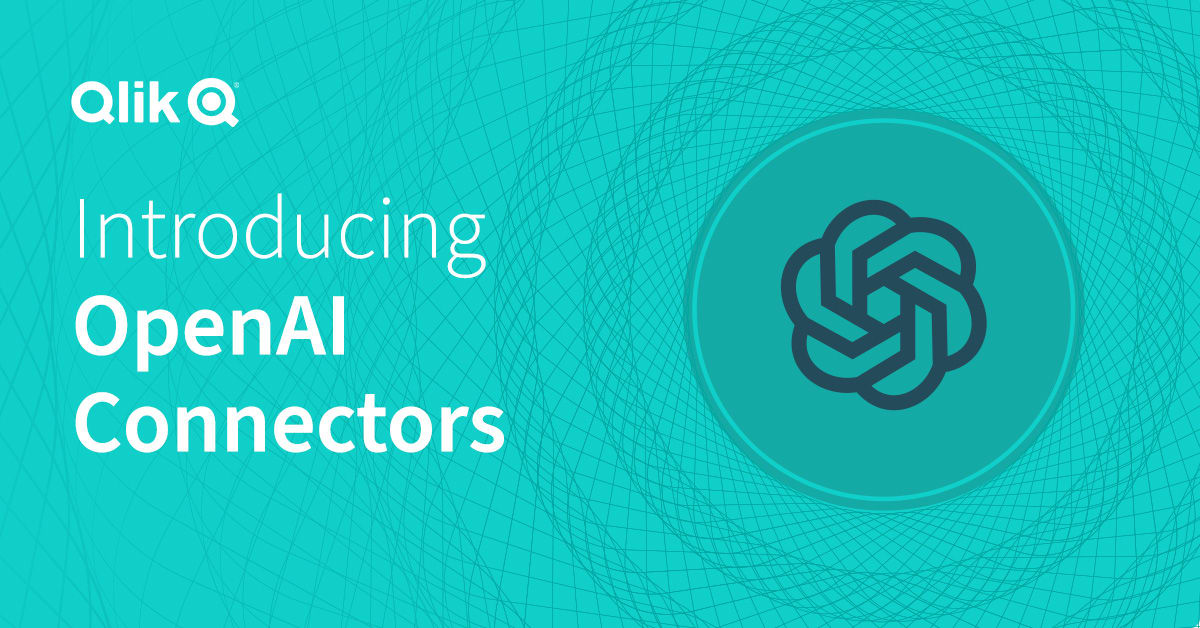Five years ago, Qlik paved the way in powering our analytics platform with AI, with the introduction of natural language processing and generation. Our augmented analytics capabilities, which now also include fully interactive search, chat, and multi-language support, enabled a generative AI experience before it was cool. Today marks the next step in our AI journey with the launch of a new suite of OpenAI connectors to deliver a ChatGPT experience in Qlik Cloud.
This new release includes automation connectors alongside real-time analytics integration, enabling our customers and partners to request and embed generative AI content directly in their analytics experience. With this capability, you can take advantage of the rich content offered by generative AI in a variety of ways, such as augmenting analytics with natural language insights from OpenAI, synthesizing and combining third-party data into existing data models, and asking questions in real-time using data from Qlik.
What do these connectors do?
The OpenAI analytics connector constructs and sends questions to OpenAI in real-time, which processes and returns narrative output and/or tabular data. Questions can be constructed by the app developer using expressions in the load script or a sheet object, or defined by a user through the user interface, and can include data from the Qlik application as defined by selections. As opposed to large, expensive batch queries, our associative engine allows you to make selections and send small subsets of data to OpenAI in real-time, for in-context insights and answers. You can ask any question you want and get contextually relevant content with the most up-to-date responses available from OpenAI. With real-time access to generative content, we can greatly enrich the context and value of your internal data and applications. OpenAI integration works alongside our existing generative capabilities including Insight Advisor Search, Chat, and Analysis Types, to expand context, drive broader insight, and engage with more users.
If you are a developer, our new OpenAI Connector blocks in Qlik Application Automation offer you the ability to send questions and receive responses and data sets as part of automation workflows.
Please watch this video to see it in action and learn more.
What can you do with it?
We’re very excited about this new release, and we think you’re going to love what you can do with it. Initial high-value use cases will likely focus on generating natural language insights, synthesizing data, and allowing users to ask questions. Existing analytics can be augmented with natural language insights about an entity or group of entities, as defined by selections (i.e. “provide the history and relevance for the selected customers in the market”).You can request synthesized data to enhance your data model (i.e. “provide me with key demographic data for the selected countries”) that can be easily integrated with existing data sets. And you can take advantage of input elements in our applications to define questions and submit them to OpenAI for responses in real-time, with relevant data included from our applications.
Of course, these are just a few of the many possible scenarios that exist. Our open platform approach provides you with the tools to innovate and build your own solutions in addition to prescribing what you can do. With this flexibility, you can easily identify and take advantage of the many valuable ways to utilize generative AI with your analytics.
What’s next from Qlik?
There is much more to come as our journey with AI continues, as always focused on empowering everyone to drive deeper, more meaningful insights for their business. We previewed prototype capabilities at QlikWorld, and will bring several enhancements over the coming months, including enhanced generative AI expression, enhanced NLG, key driver analysis, and Microsoft Teams integration.
So next, we can’t wait to see what our customers and partners do with it. So time to press play! You can get started now leveraging these tutorials.













































